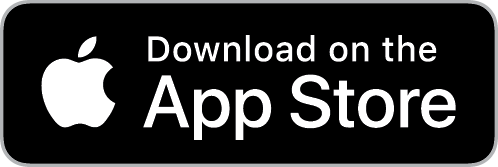Modern Studies - Higher Index
Online Lessons for Students in Scotland learning Higher Modern Studies
- Governance of Scotland
- Leaving the EU
- Holding Government to Account
- Electoral Systems
- Voting Behaviour
- Government Decision Making
- Health and Wealth Inequality
- Political Ideology
- Government Policies
- Democratic Participation
- Political Instituations
- Inequality
- International Influence
- Skills Questions
- Essay Writing
Democracy in Scotland and the United Kingdom: Scotland is a democracy, being represented in both the Scottish Parliament and the Parliament of the United Kingdom since the Scotland Act 1998. Most executive power is exercised by the Scottish Government, led by the First Minister of Scotland, the Head of Government in a multi-party system.
Governance of Scotland: this lesson explains how Scotland is currently governed, what the advantages and disadvantages of this approach are.
System of Governance in Scotland: the Government in Scotland is structured into a number of directorates. Directorates and their related public bodies are responsible for putting government policy into practice.
Alternative systems of governance: this project considers the diversity of governance structures that exist outside of the formal apparatus of government that enable people to realise their goals.
Leaving the EU: Brexit was the withdrawal of the United Kingdom from the European Union at 23:00 GMT on 31 January 2020.
Impact of Brexit: this lesson explains the different issues, advantages and disadvantages that arise from UK leaving the EU.
Holding Government to account: the bill system allows for UK legislation brought forward by the government to be debated in both the House of Lords and Commons where amendments can be put forward and all legislation is dependent on passing both Houses. Select Committees and Public Bill Committees are useful sources for holding the government to account. Select Committees have specific areas: the Public Accounts Committee, for example, holds all public spending to account and frequently challenges ministers on their departmental spending.
Effectiveness of Parliament in holding Government to account: this lesson gives some examples of the parliaments of Scotland and the UK holding government to account, it also explores about how effective these methods are.
Electoral systems: an electoral system or voting system is a set of rules that determine how elections and referendums are conducted and how their results are determined.
First past the post: one type of electoral system. In the UK it is the system used for the election of MPs to the House of Commons and for some local government elections.
The Additional Member System: a mixed electoral system with one tier of single-member district representatives, and another tier of “additional members” elected to make the overall election results more proportional.
Voting Behaviour: a form of electoral behaviour. Understanding voters’ behaviour can explain how and why decisions were made either by public decision-makers, which has been a central concern for political scientists, or by the electorate.
Voting Behaviour Part One: social class is a measure of a person’s status or position within society. Social class usually takes account of an individual’s income, wealth, occupation, education, etc, although different classifications use different criteria.
Voting Behaviour Part Two: newspapers, television, radio and the internet are also said to influence voting behaviour.
Government decision making: this section explains how citizens influence government decision making and pressure groups.
How citizens influence Government decision making: this lesson teaches how individuals can influence decision making, trade unions influence decision making and how media influences decision making.
Pressure groups: the pressure group is defined as a special interest group which seeks to influence Government policy in a particular direction.
Social issues in the United Kingdom: social inequality. What is social inequality in the UK? Explore differences in incomes, ie rich and poor, gender, ethnicity, disabilities and health issues, age, ie children, young people, middle aged, pensioners.
Health and wealth inequality: one of the fundamental causes of health inequalities is the unequal distribution of wealth across the population. Wealth is the value of an individual or group’s money and/or material assets.
Causes of income and wealth inequality: income and wealth inequality can be caused by differences in the growth of income of different social groups. Changes in employment and taxation and government policy can also affect levels of inequality.
Lifestyle choices impacting on health: a variety of lifestyle or health related habits (behavioural factors) can have a major impact on a person’s health. These include smoking, alcohol, poor diet leading to obesity or malnutrition, lack of physical exercise, sexual behaviour and problems resulting from drug taking.
Other causes of health inequality: lifestyle choices are not the only cause of poor health. Health can be influenced by factors outside of anyone’s control.
Impact of inequality on women: this lesson explains how UK inequality impacts on women as a group, and the main statistics on jobs and pay.
Impact of inequality on ethnic minority groups: this lesson explains how minorities are impacted by inequality and the stats and facts about the impact of inequality.
Political ideology: a certain set of ethical ideals, principles, doctrines, myths or symbols of a social movement, institution, class or large group that explains how society should work and offers some political and cultural blueprint for a certain social order.
Individualism and collectivism: Individualism stresses individual goals and the rights of the individual person. Collectivism focuses on group goals, what is best for the collective group.
Government policies: the three main types of government macroeconomic policies are fiscal policy, monetary policy and supply-side policies.
Government policies to tackle inequality (Part One): Governments can intervene to promote equity, and reduce inequality and poverty, through the tax and benefits system. This means employing a progressive tax and benefits system which takes proportionately more tax from those on higher levels of income, and redistributes welfare benefits to those on lower incomes.
Government policies to tackle inequality (Part Two): Governments can intervene to promote equity, and reduce inequality and poverty, through the tax and benefits system. This means employing a progressive tax and benefits system which takes proportionately more tax from those on higher levels of income, and redistributes welfare benefits to those on lower incomes.
International Issues: World Power – USA: this section explains the political system of the USA, its political institutions and international influence.
Democratic participation: this section explores whether the US is a democracy and how US citizens participate in democracy.
Is the US a democracy? The United States is one of the world’s developed democracies where third parties have the least political influence. The federal entity created by the U.S. Constitution is the dominant feature of the American governmental system.
How US citizens participate: citizens have a wide range of opportunities to put forward their views, including voting, standing as candidates, joining political parties and joining interest groups.
Political institutions: those bodies – parties, legislatures, and heads of state – that make up the whole mechanism of modern governments.
Powers of the US President: The Constitution explicitly assigns the President the power to sign or veto legislation, command the armed forces, ask for the written opinion of the Cabinet, convene or adjourn Congress, grant reprieves and pardons, and receive ambassadors.
Limits on the powers of the US President: the US President cannot declare war, decide how federal money will be spent, interpret laws, choose Cabinet members or Supreme Court Justices without Senate approval.
Inequality: The lessons in this section include health inequality in the US, in the US education and the US Justice system.
Health inequality in the US: health disparities include mortality, life expectancy, burden of disease, mental health, uninsured/underinsured and lack of access to care.
Inequality in US education: this lesson explains the reasons why there is inequality in the US Education system. Statistics show that white Americans and Asians consistently outperform Hispanics, African Americans, and Native Americans in terms of educational attainment.
Inequality in the US justice system: this lesson teaches the inequalities in relation to crime in the US, the different experience of prison and policing for African Americans and government action on these issues.
Income inequality in the US: this lesson teaches how inequalities around income impacts all Americans and how it impacts African Americans. Income disparities are so pronounced that America’s top 10 percent now average more than nine times as much income as the bottom 90 percent.
International influence: this section teaches how the US influences other countries politically, economically and militarily.
How the US influences other countries politically: the United States Constitution has had influence internationally on later constitutions and legal thinking. Its influence appears in similarities of phrasing and borrowed passages in other constitutions, as well as in the principles of the rule of law, separation of powers and recognition of individual rights.
How the US influences other countries economically: the United States of America is the world’s foremost economic and military power. It has the third largest population in the world and its economy produces around one quarter of the world’s wealth – $17.97 trillion in 2015.
How the US influences other countries militarily: militarily, the US remains the world’s only superpower. Although the US does not spend the most in the world on defence as a proportion of GDP (3.8%), in absolute terms it spends vastly more than any other country.
Skills and essay writing: this is the most important part of the writing process. Organizing your thoughts.
Research.
Tone and voice.
Starting an essay.
Making an argument.
Supporting an argument.
Concluding an essay.
Skills questions: This section explores skills questions and how to tackle reliability, objectivity and conclusion type questions.
How to tackle the reliability question: this lesson explains how to tackle reliability questions, structuring a paragraph and writing a conclusion.
How to tackle the objectivity question: this lesson explains how to tackle objectivity questions, writing an answer and writing a conclusion.
How to tackle the conclusion question: this lesson explains how to tackle conclusion questions, and write an answer.
Essay writing: begin with what you are ready to write – a plan, a few sentences or bullet points. Start with the body and work paragraph by paragraph. Once you know what your essay is about, then write the introduction and conclusion.
How to write a 12-mark extended response: there are two types of 12-mark questions:
Evaluate questions: In this type of question you must come to a judgement on the main point of the question. You should make use of evaluative language. Analyse questions: In this type of question you must explain an issue in detail and identify the main points within it. If different points are connected you must explain that as well as detailing the implications of these different points.
How to write a 20-mark essay: There are two types of 20-mark questions: Discuss questions – you must provide information and ideas about the topic but you must also analyse and evaluate different views of the statement/viewpoint. To what extent questions- you will need to analyse the issue in the question and come to a conclusion(s) which requires an evaluative judgement that uses quantitative words.


"It's bright and colourful, easy to read, and extremely easy to use unlike most textbooks or online learning websites" Daisy, S3 PupilSign Up & Learn Today

